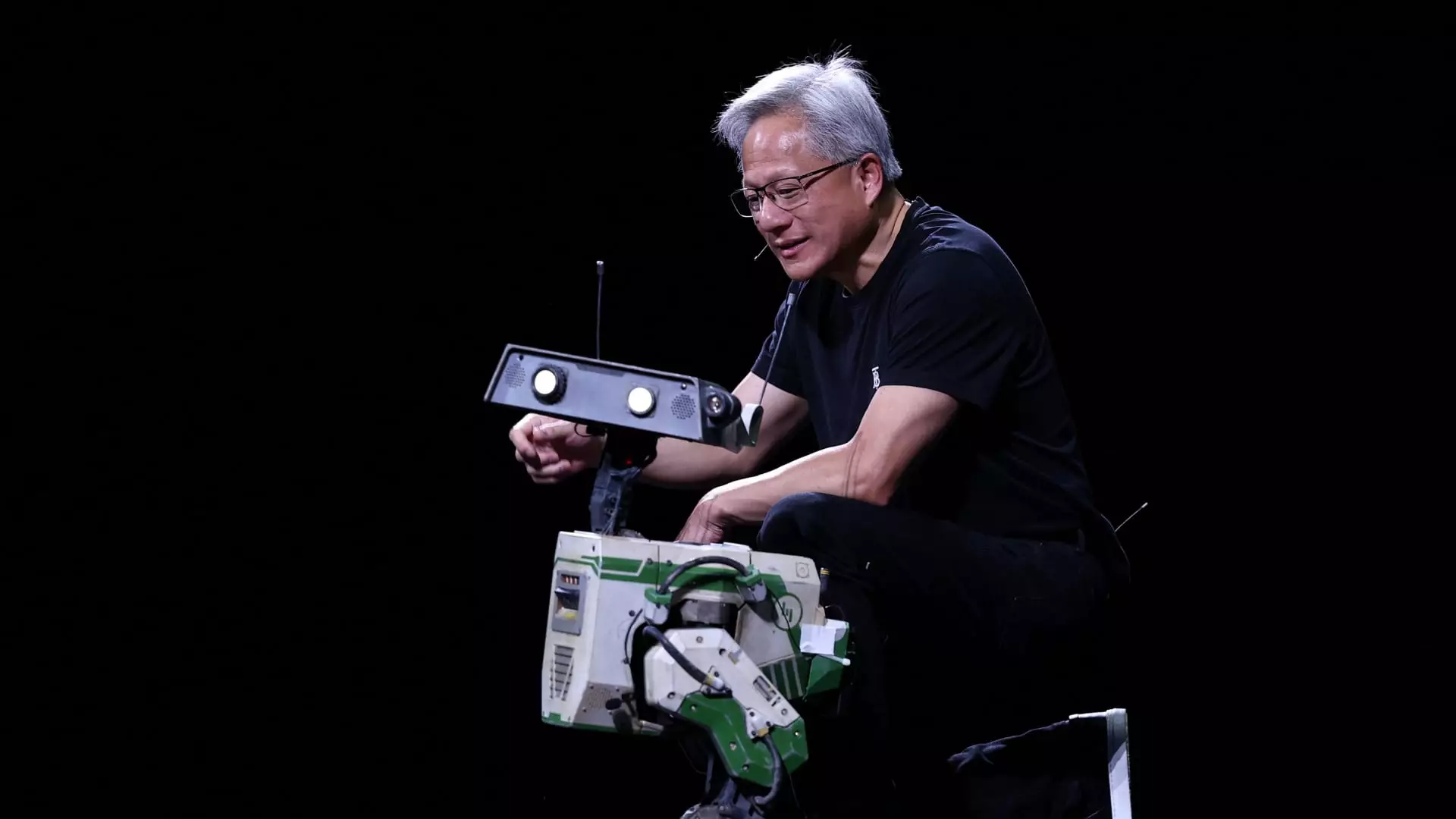In the ever-evolving landscape of technology, Nvidia stands at a remarkable intersection of innovation and opportunity, as emphasized by CEO Jensen Huang during the recent shareholder meeting. While artificial intelligence (AI) has taken center stage, it’s essential to spotlight the burgeoning realm of robotics—a field that Huang notes is emerging as a significant growth avenue for the company. With self-driving vehicles set to lead the charge in commercial application, Nvidia’s forward-thinking strategy is poised to reshape our technological future dramatically.
Nvidia’s transformational ascent has defied conventional expectations, transitioning from a chip manufacturer to a multifaceted technology powerhouse. By showcasing its expertise in AI and robotics, the company is tapping into what Huang describes as a multitrillion-dollar opportunity—a testament to the profound market potential they are betting on. The decision to group automotive and robotics into a single category for financial reporting signifies an acute awareness of the convergence between these two dynamic fields. This strategic alignment not only underscores Nvidia’s commitment but also amplifies the synergies between AI and robotics, paving the way for groundbreaking advancements.
Financial Gains Amidst Technological Innovation
The financial metrics coming out of Nvidia’s recent quarters speak volumes about the demand for their products. Reporting an impressive increase of 72% in the automotive and robotics division, the company’s $567 million in quarterly sales may seem modest compared to its total revenue but reflects significant growth potential. The exponential rise in demand for data center GPUs, which power sophisticated AI applications like ChatGPT—widely recognized for their transformative capabilities—has fueled Nvidia’s total sales from approximately $27 billion in fiscal 2023 to a staggering $130.5 billion last year. The projected figures for the current year, nearing $200 billion, signify not just a profitable trajectory but an evolutionary leap in technological advancement.
Nvidia’s recent surge in market capitalization to $3.75 trillion has positioned it as a leader in the tech space, even outpacing industry giants like Microsoft. This meteoric rise indicates the confidence investors and analysts have in Nvidia’s vision. The company’s strategy to continuously innovate and diversify, particularly in AI and robotics, affirms its dominant position in the industry.
The Vision for Autonomous Futures
Huang’s vision extends beyond profit margins; it cultivates a future where robots and self-driving vehicles are integral to our daily lives. The introduction of Nvidia’s Drive platform, utilized by luxury automaker Mercedes-Benz, is a promising step towards realizing the potential of autonomous vehicles. Furthermore, the recent advancements in AI models aimed at humanoid robots, dubbed ‘Cosmos,’ hint at Nvidia’s commitment to universal applications of its technology. Huang envisions a world rich in automation, captivated by the ambition of billions of robots and autonomous vehicles operating alongside humans—a profound shift in how we perceive industry and society.
The implication of such a reality evokes important questions regarding labor displacement, ethics in AI development, and the overarching impact on global economies. However, the optimistic outlook suggests a future where technology enhances human capabilities rather than replaces them. With the right governance and ethical frameworks, the synergy between humans and machines can lead to unprecedented prosperity and innovation.
Evolving Beyond Chip Manufacturing
In an intriguing twist, Huang declared that Nvidia has long transcended its identity as merely a chip company. The rebranding as an “AI infrastructure” or “computing platform” provider reflects a strategic pivot that acknowledges the complex interdependencies between hardware, software, and cloud services. As the technological landscape becomes increasingly collaborative, Nvidia’s approach is refreshingly comprehensive, integrating software, cloud services, and powerful networking chips to enhance the capabilities of its AI accelerators.
This strategic metamorphosis may be what positions Nvidia favorably for the challenges and opportunities that lie ahead, particularly regarding the integration of AI in everyday machinery, transportation, and production processes. The company’s ability to adapt and innovate in parallel with industry demands sets a precedent that could redefine the technological frontier.
As Nvidia forges ahead, the potential for groundbreaking change and vast opportunities in AI and robotics unveils a future limited only by our imagination. With strong leadership, innovative drive, and strategic foresight, the stage is set for Nvidia to leave an indelible mark on industries globally.

